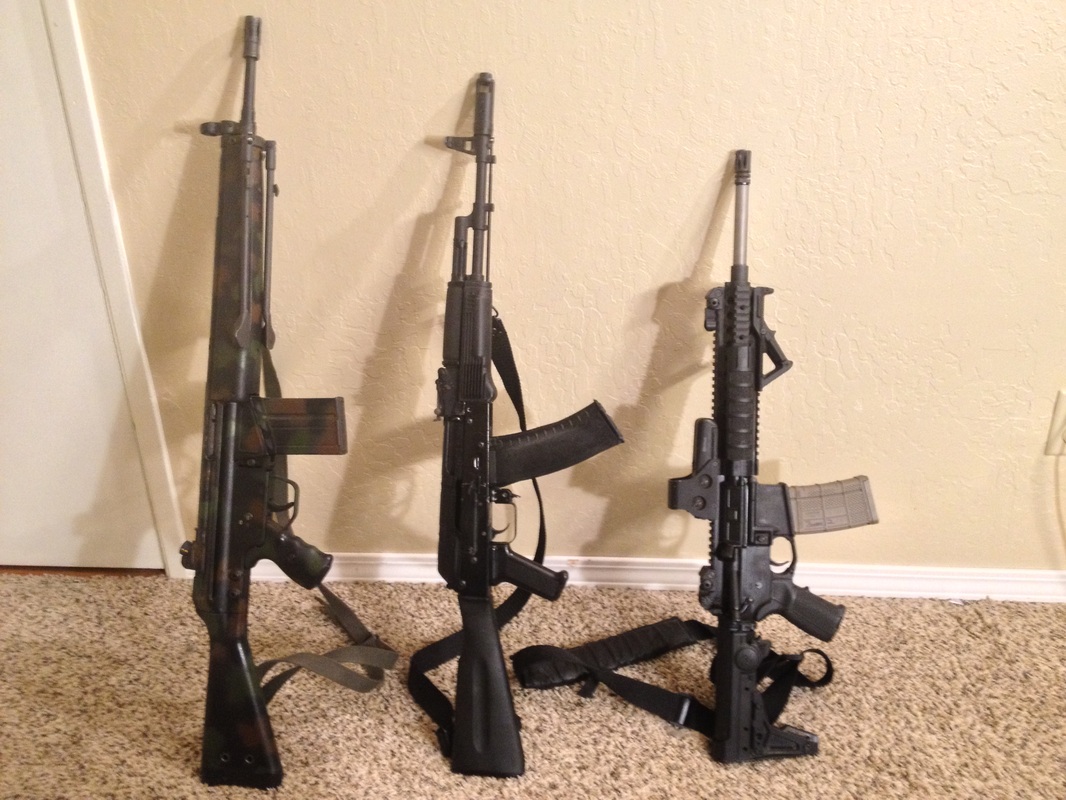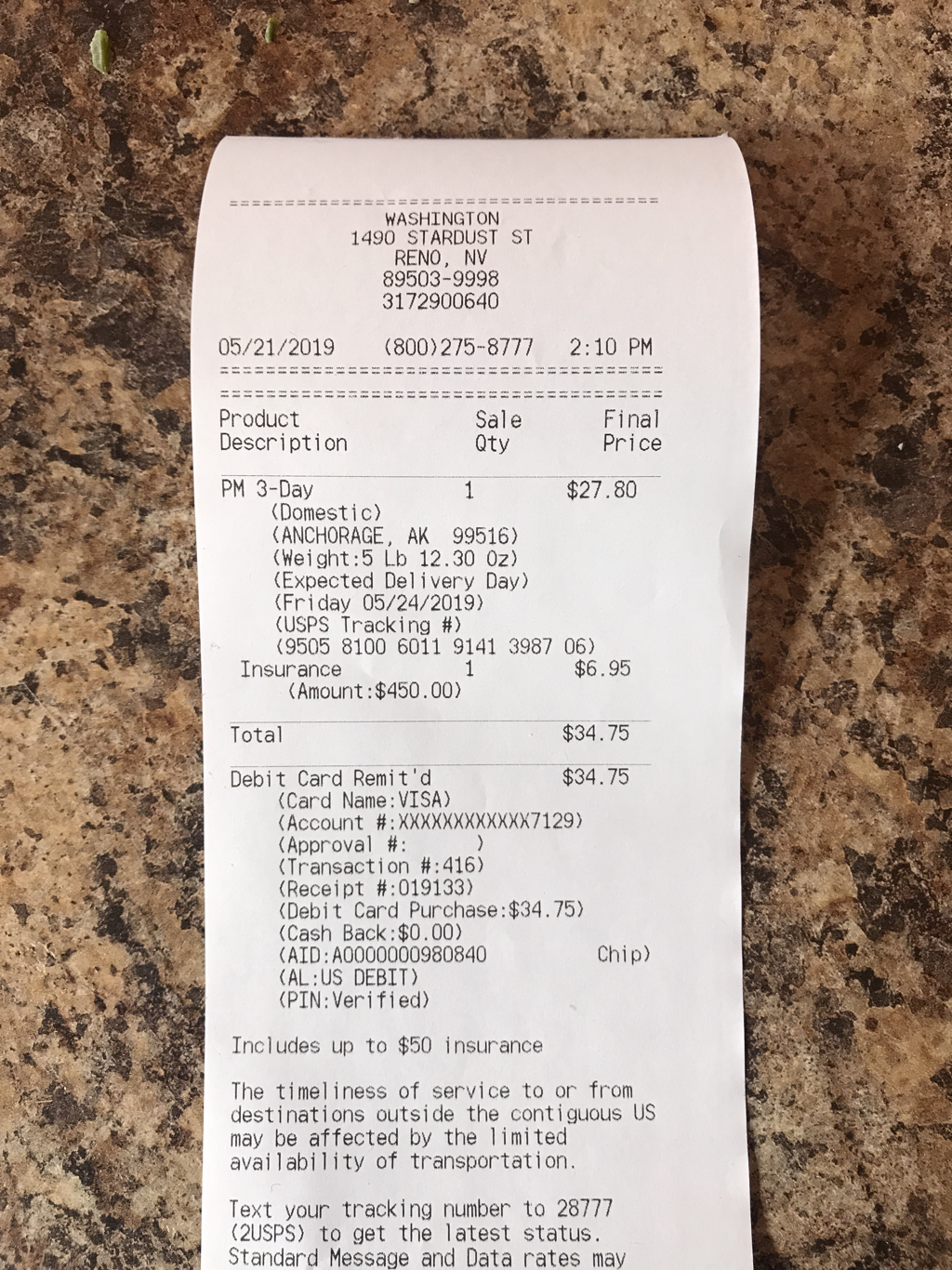Heckler and Koch 91
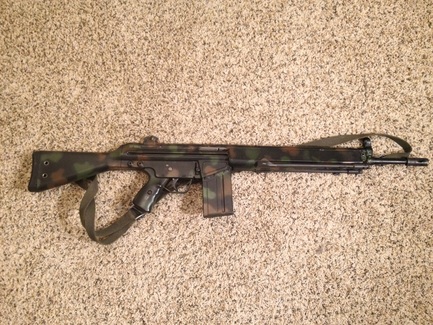
The trigger pull on the 91 is heavy, but crisp. Using my super duper trigger pull gauge it comes in at 8 pounds 5 ounces. The safety is located on the left side of the grip housing, us is on, down is off. Having freakishly long fingers, I can manage to manipulate it without adjusting my firing grip. Mounting optics on an H&K roller locking weapon requires a special scope mount that clamps onto two tabs over the top of the receiver. Problem with this, is that the optics are placed rather high above the top of the receiver to clear the rear site. This makes for a chin weld on the buttstock, unless you purchase a stock with a cheek riser. And being H&K nearly everything for this gun is expensive, with the exception of the magazines.
The factory H&K Diopter Sites remain to be my favorite iron site out there. They are essentially a peep site, where you center the front post and hood in the rear site. The rear site is a drum that rotates. It has an open V notch for close in (less than 200 Meters), and has apertures for 200, 300 and 400 meters. I find these sites to be quick and they supply a fantastic site picture. One downside is adjusting the elevation requires a special tool from H&K. The windage is adjustable using a phillips head screwdriver.
The manual of arms on the 91 is a bit different than that of western rifles of the same time period. The 91 features no bolt hold open, and the charging handle is located near the front site on the left side of the weapon. The magazine release is a push button on the right side of the magazine well. If you have freakishly long fingers such as I do, it is possible to hit it with your right hand, but for most you must break your grip, or hit it with your left hand. Being "Roller Locking Perfection", the 91 has more felt recoil than that of the FN FAL or M1A family of weapons. It is also hard on brass due to having a fluted chamber. A fluted chamber is a series of cuts in the chamber of the weapon, allowing for gases to blow back into the chamber and assist in extraction. Heckler and Koch claims that due to the fluted chambers, these weapons can extract brass even if the extractor is broken. As a reloader, this makes for some pretty mangled brass, not to mention it is ejected about 20 feet forward and to the right of the weapon.
When reloading this weapon, I have found the following to be the most effective method:
- Lock the bolt to the rear
- Strip the empty magazine out of the weapon
- Insert fresh magazine
- Slap the charging handle
AK-74
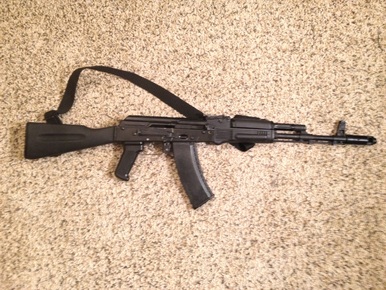
The trigger on the AK-74 is an improvement over that of the H&K. The 10 pull average on this one averaged 3 pounds 9.9 ounces. The trigger is a Tapco G2 trigger group, a necessary compliance part. I have found the G2 triggers to be a great upgrade in an AK, with most being quite a bit heavier. For those of you who are unfamiliar with Tapco, back in the day Tapco sold AK and FN FAL compliance parts, along with parts kits and accessories. This is well before the current Tapco, which now specializes in committing atrocities to the AK, and SKS platform (we call this "Tapco-Fucking a rifle".). The charging handle is reciprocating, and is located on the right side of the weapon. The safety is a huge stamped steel lever which also functions as a dust cover for the bolt group. The safety on the AK series cannot be manipulated easily, and requires a break from the firing grip. On top of it, it is not the most quiet thing in the world.
Mounting optics on an AK is a bit worse than that of a H&K 91. You can replace the stamped steel top cover with one featuring a picatinny rail, but they do not hold a zero that well. Other options include a scope mount off the left side of the receiver, or a railed gas tube replacement. The stock sites on an AK are not very precise, and other than elevation, they are not easy to adjust in the field. It is your traditional blade and groove site arrangement, with the rear adjustable and marked for elevation.
The magazine release is located at the front of the trigger guard and is a paddle. Pressing it forward releases the magazine. The magazine setup on an AK is a rock in style. You put the front of the magazine into the magazine well (locking it onto the trunion), and then rock it to the rear to lock it into a weapon. It takes a bit of practice to get this down, and it is certainly harder than inserting an AR magazine. This AK lacks a bolt hold open, and the AK has no means to hold the bolt open, so that makes things a bit complicated when it comes to a reload. Over the years I have adopted the following manual of arms when reloading an AK;
- Grab new magazine from pouch or vest
- Use the front of the new magazine to hit the magazine release and knock the old magazine out
- Insert new magazine
- Tilt the rifle to the left and operate the charging handle
Towards the end of 2005, I decided once again to change platforms. The AK worked fine for me, but there are better things out there. That brings me to where I am right now.
AR-15
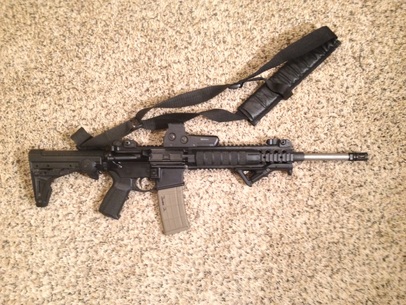
One day shooting with my friend Glen, he brought out his CAR-15, and I was able to shoot it. I absolutely loved it, and had to have one. Towards the beginning of 2003 when I was about to turn 18, I plotted buying an AR-15. Due to my dads absolute hatred of that platform, I had to be sneaky about getting one. After my 18th birthday on January 22, 2003, I went to Gun World in Elko, Nevada and purchased a stripped lower receiver. I hid it in my closet while I saved money to buy a parts kit. Once I had the money for a parts kit, I purchased a post ban CAR-15 kit from Model 1 Sales. I had it shipped to my moms house so that my dad would be unaware to the fact that I am committing a cardinal sin in his eyes. Once the parts kit came in I assembled everything at a friends shop in the Valley. I was now an AR-15 owner. I had to hide it in my closet, and sneak it out of the house every time I wanted to shoot it. I had to secretly buy 5.56 ammo when I was not with my dad. After I moved out of the house in August of 2003, I decided I would finally let my dad know that I owned an AR-15.
I was home on winter break from school, and my dad wanted to go shoot rabbits and coyotes. I opened up my rifle case and put the AR in the car. He stopped and looked at it, then me. "Where did you get that piece of shit?". Cat was out of the bag! I told him how I put it together in secrecy and told him what a great gun it had been for me. Fortunately, he chose to laugh instead of disown me, he actually got a kick out of how sneaky I had been. Up until this point my franken AR had been completely reliable. We had not been out for more than a half hour when a Jack Rabbit decided to wander out into the open. I took out my AR, chambered it and fired one round. The rabbit was dead, but I had just experienced my first stoppage in my AR. My dad laughed hard and long, and said "Well, looks like it is still a piece of shit!".
After this I had quite a few more reliability issues with that AR, including a broken bolt-head. This made me shy away from the platform until late 2005. Late 2005 I decided to "Un-Ban" my AR, and do it with quality parts. My cheap as can be AR was refitted with a Magpul M93B buttstock, CMT lower parts kit and Bolt Carrier Group, LMT upper receiver, Troy Rail System, and topped off with a Noveske Barrel (the best barrel you can get in the AR in my opinion). I equipped it with an EOTech Holographic Site, and Troy Backup Iron Sites.
Immediately I fell in love with the platform. It was light, accurate, and this time it was reliable. It practically had no felt recoil, and the trigger was much shorter and more crisp than that of the AK or H&K. My trigger brakes at 6 pounds 15 ounces. Magazines and parts were cheap and abundant. Working on the AR is so simple anyone could do it. No drilling and guesstimating how things go, it was all straight forward and simple.
Mounting optics on the AR is a breeze. With a flat top A3 upper receiver you can mount a plethora of optics. From the close quarters EOTech to a magnified scope, it was easy to customize. With a handguard mounted rail system, mounting grips, lights, and lasers is just plug and play.
Ergonomically the AR is pretty close to perfect. The safety is on the left side of the lower receiver. It is a 90 degree throw, with an upward motion putting it on safe and downward placing it on fire. This weapon has a Bolt Hold Open on the left of the lower receiver. It automatically locks the bolt open on an empty magazine. You simply press the Bold Hold Open to close the bolt on a fresh magazine. To lock the bolt to the rear is a bit complicated. Using one hand you must pull the charging handle to the rear (located on the rear of the upper receiver) while pressing on the bolt hold open. This is a two handed affair, and is a bit more difficult than locking the bolt open on the H&K 91.
The manual of arms for reloading an AR is simple and fast;
- Depress magazine release on right side of lower receiver
- Insert new magazine
- Press bolt release
Here is a video showing how simple it is;
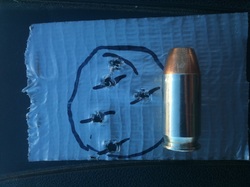
In nearly 10,000 rounds I have only had one issue with reliability, and it stemmed from a hot batch of Wolf ammunition (which in itself is quite the oxymoron).
This is definitely my "Go to gun" for the time being. It is easy to use, reliable, and accurate. I do not really have any complaints about this weapon, and I am quite satisfied in it.
